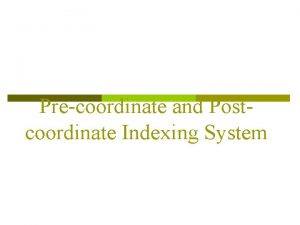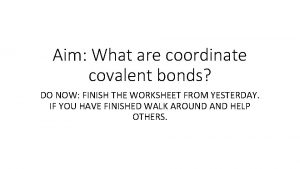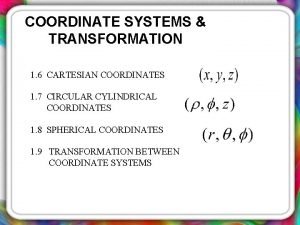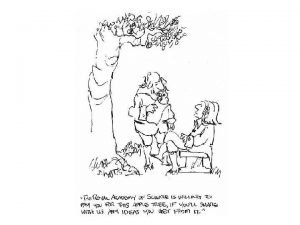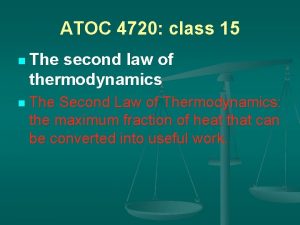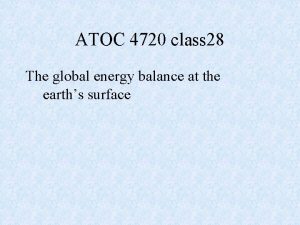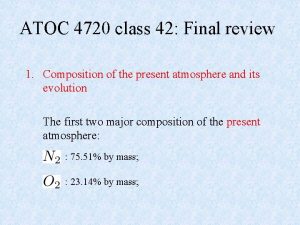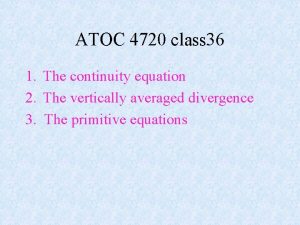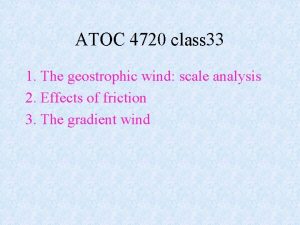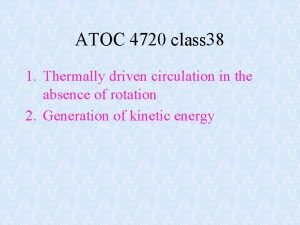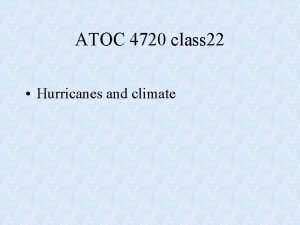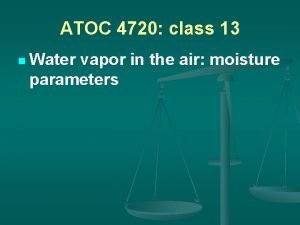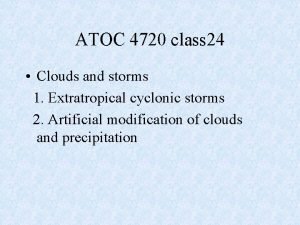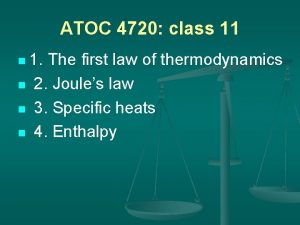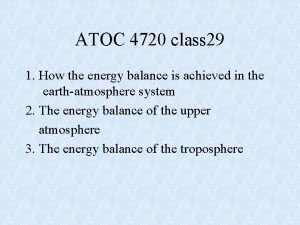ATOC 4720 class 31 1 Coordinate systems 2












- Slides: 12

ATOC 4720 class 31 1. Coordinate systems 2. Forces

1. Coordinate systems Dynamics: equations govern atmosphere motion Fundamental law: Newton’s second law of motion : net forces (N) : mass (kg) : acceleration ( )

Fixed frame in space: Rotational frame: on earth: convenient Newton’s second law: real forces Convert from fixed fram to rotational frame: see handout During the process of conversion, an additional force appears: Coriolis force, due to the earth’s rotation

Horizontal coordinates Spherical coordinate system rotating with the earth Longitude Latitude

the distance from earth’s center to the location of motion For motion below 50 km: Error <1%

Vertical coordinate Geopotential height: Geopotential at mean sea level Average acceleration of gravity at sea level With this choice, horizontal planes coincide with constant geopotential surface, and gravitational force does not have horizontal component (below 50 km, close to be geometric height)

In this coordinate system, velocity components are: Total velocity vector:

P and vertical coordinates P coordinate: some equations are simpler using P instead of Z coordinate Convertion from Z to P: hydrostatic equation Scientific basis: prompt class Vertical velocity: ( )

Since both Z and P coordinates sometimes intersect topography at lower level, making PGF term difficult to calculate P Z We often use Coordinate: terrain following Surface pressure at surface

Hybrid Lower levels: Higher levels P coordinate: NCAR CCSM

2. Forces 1. PGF 2. Gravity 3. Friction-important in PBL (planetary boundary layer) 4. Coriolis force (apparent force, due to the earth’s rotation)

PGF: see blackboard
 What is pre coordinate indexing system
What is pre coordinate indexing system Co coordinate bond
Co coordinate bond Area in spherical coordinates
Area in spherical coordinates Rotating coordinate systems
Rotating coordinate systems Decision support systems and intelligent systems
Decision support systems and intelligent systems Engineering elegant systems: theory of systems engineering
Engineering elegant systems: theory of systems engineering Embedded systems vs cyber physical systems
Embedded systems vs cyber physical systems Engineering elegant systems: theory of systems engineering
Engineering elegant systems: theory of systems engineering Today's classes
Today's classes Package mypackage class first class body
Package mypackage class first class body Difference between abstract class and concrete class
Difference between abstract class and concrete class Mode grouped data
Mode grouped data Class i vs class ii mhc
Class i vs class ii mhc
